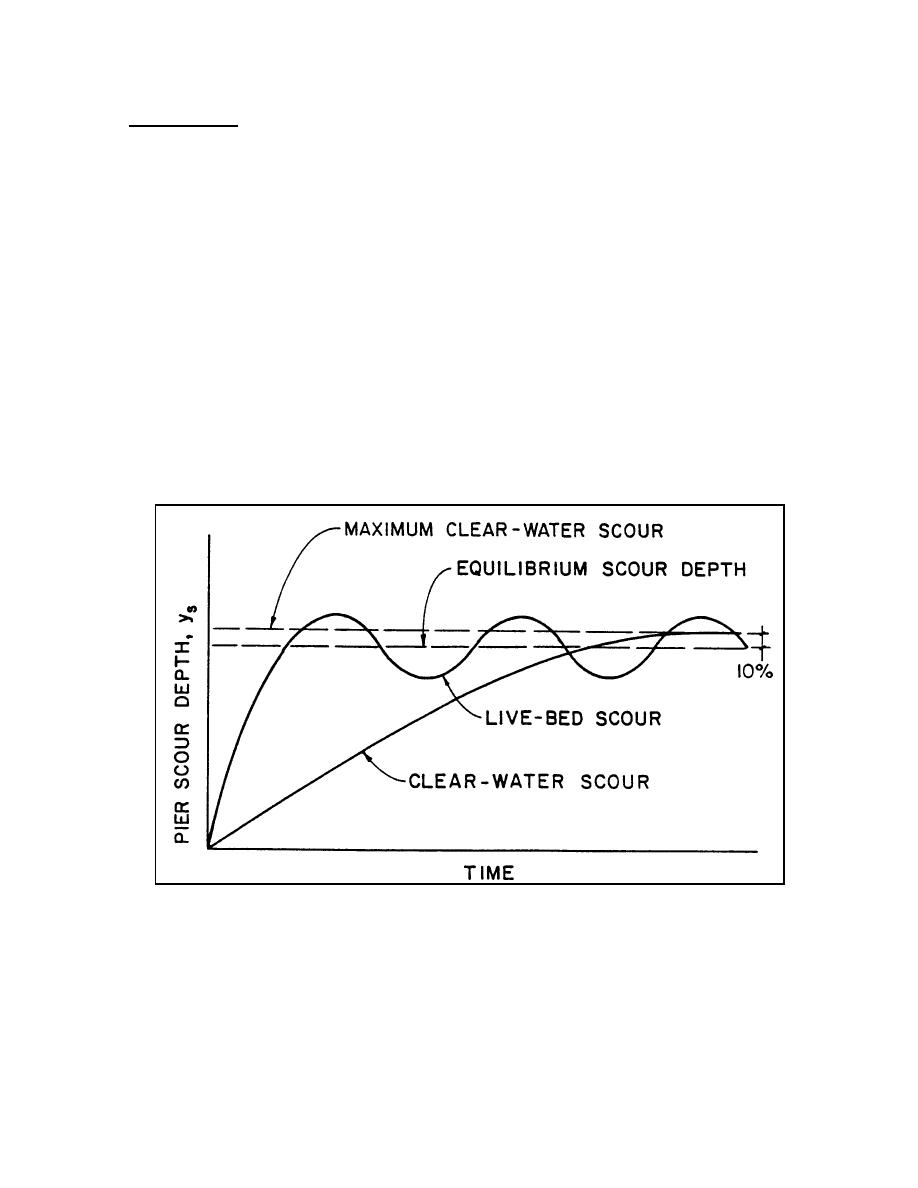
Live-bed scour occurs when the bed material upstream of the crossing is moving and moves
as contact sediment discharge in the contracted bridge opening and/or into the local scour
holes.
Typical clear-water scour situations include (1) coarse bed material streams, (2) flat gradient
streams during low flow, (3) local deposits of larger bed materials that are larger than the
biggest fraction being transported by the flow (rock riprap is a special case of this situation),
(4) armored stream beds where the only locations that tractive forces are adequate to
penetrate the armor layer are at piers and/or abutments, (5) vegetated channels where,
again, the only locations that the cover is penetrated is at piers and/or abutments, and (6)
streams with fine bed material and large velocity or shear stress whereby the bed material in
transport washes through a contraction or local scour hole
Clear-water scour reaches its maximum over a longer period of time than live-bed scour
(Figure 7.2). This is because clear-water scour occurs mainly on coarse bed material streams.
In fact, clear-water scour may not reach its maximum until after several floods. Also, maximum
clear-water scour is about 10 percent greater than the equilibrium live-bed scour. Bridges over
coarse bed material streams often have clear-water scour at the lower part of a hydrograph,
live-bed scour at the higher discharges, and then clear-water scour on the falling stages.
Figure 7.2. Local scour depth at a pier as a function of time.
Live-bed scour in sand bed streams with a dune bed configuration fluctuates about an
equilibrium scour depth (Figure 7.2). The reason for this is the fluctuating nature of the
sediment transport of the bed material in the approaching flow when the bed configuration of
the stream is dunes. In this case (dune bed configuration in the channel upstream of the
bridge), maximum depth of scour is about 30 percent larger than equilibrium depth of scour.
7.5





 Previous Page
Previous Page
